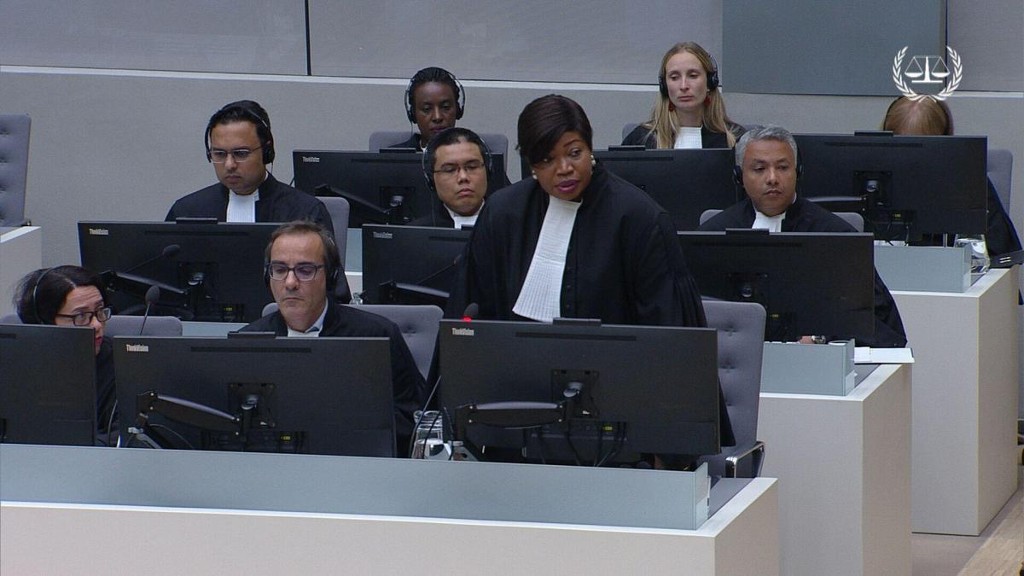Recognizing the Complexity of Gender in the Crime Against Humanity of Persecution – Just Security
Recognizing the Complexity of Gender in the Crime Against ... Just Security


ICC’s Policy on the Crime of Gender Persecution and its Application in the Case of Timbuktu

(Editors’ note: This is part of our series on the ICC’s Policy on the Crime of Gender Persecution.)
Introduction
The city of Timbuktu in Mali was under the control of armed groups, Ansar Dine and Al-Qaeda in the Islamic Magreb (AQIM), for ten months in 2012-13. These groups imposed their extremist interpretation of Sharia law on the population, specifically targeting women and girls. This article explores the application of the International Criminal Court’s (ICC) Policy on the Crime of Gender Persecution in the case of Timbuktu.
Gender Persecution in Timbuktu
- Forced abandonment of traditional clothes and jewelry
- Requirement for women and girls to cover their heads and bodies
- Prohibition on being alone with or speaking to men other than husbands or close relatives
- Ban on girls attending school with boys
- Restriction on women going out at night
If these edicts were violated, women and girls faced severe punishment, including lashes, arrest, imprisonment, beatings, and rape. The ICC’s case of Prosecutor v Al-Hassan highlighted the systematic targeting and persecution of women and girls in Timbuktu.
ICC’s Focus on Gender Persecution
The ICC’s Office of the Prosecutor (OTP) has increasingly focused on gender persecution, with the case of Al-Hassan being the first to litigate persecution on gender grounds. The Rome Statute includes gender as one of the persecutory grounds, defining it as “the two sexes, male and female, within the context of society.” The OTP’s Policy Paper on Sexual and Gender-Based Crimes in 2014 and the Policy on the Crime of Gender Persecution in 2022 provide guidance on investigating and prosecuting gender persecution.
Understanding Gender Persecution
The Policy on the Crime of Gender Persecution clarifies how gender is used in persecutory targeting. It recognizes that individuals may be targeted based on sex characteristics or socially-constructed gender roles, behaviors, activities, and attributes. The policy also emphasizes that the targeted group should be viewed broadly, including not only direct victims but also sympathizers and affiliates. Perceptions of the perpetrator regarding an individual’s gender identity are also considered relevant.
Application of the Policy
The ICC’s judges are being challenged to understand the socially-constructed nature of gender in new ways, as seen in cases like Prosecutor v Said and Prosecutor v Abd-Al-Rahman, which involve the targeting of males based on assumptions about their role as fighters and defenders. The Prosecutor is also considering gender persecution in preliminary examinations and investigations in other situations, such as Nigeria and Afghanistan. The Policy on the Crime of Gender Persecution is also being utilized outside of the ICC, such as in Colombia’s Special Jurisdiction for Peace.
Importance of the Policy
The Policy on the Crime of Gender Persecution provides detailed guidance to the ICC Prosecutor’s Office on the nature and breadth of gender persecution. It highlights the role of gender in persecutory targeting and ensures the inclusion of all relevant grounds of persecution. By understanding the intersectionality of gender with other forms of persecution, investigators can ensure comprehensive charging of crimes.
Conclusion
The case of Timbuktu exemplifies the realities of gender persecution, where women and girls were subjected to a campaign of aggression and oppression. The ICC’s Policy on the Crime of Gender Persecution is a crucial tool in addressing such crimes and ensuring justice for victims.
IMAGE: Former ICC Prosecutor Fatou Bensouda with her Prosecution team during the opening statement at the Confirmation of Charges hearing of the case against Al Hassan on July 8, 2019. (via the International Criminal Court)
SDGs, Targets, and Indicators
1. Which SDGs are addressed or connected to the issues highlighted in the article?
- SDG 5: Gender Equality
- SDG 16: Peace, Justice, and Strong Institutions
2. What specific targets under those SDGs can be identified based on the article’s content?
- SDG 5.1: End all forms of discrimination against all women and girls everywhere
- SDG 5.2: Eliminate all forms of violence against all women and girls in the public and private spheres, including trafficking and sexual and other types of exploitation
- SDG 16.3: Promote the rule of law at the national and international levels and ensure equal access to justice for all
- SDG 16.4: By 2030, significantly reduce illicit financial and arms flows, strengthen the recovery and return of stolen assets, and combat all forms of organized crime
3. Are there any indicators mentioned or implied in the article that can be used to measure progress towards the identified targets?
- Indicator for SDG 5.1: Proportion of women and girls subjected to physical, sexual, or psychological violence in the previous 12 months
- Indicator for SDG 5.2: Number of victims of human trafficking per 100,000 population, by sex, age group, and form of exploitation
- Indicator for SDG 16.3: Proportion of population who have experienced a dispute in the past two years and who accessed a formal or informal dispute resolution mechanism, by type of mechanism
- Indicator for SDG 16.4: Number of victims of organized crime per 100,000 population, by sex, age group, and crime type
SDGs, Targets, and Indicators Table
| SDGs | Targets | Indicators |
|---|---|---|
| SDG 5: Gender Equality | 5.1 End all forms of discrimination against all women and girls everywhere 5.2 Eliminate all forms of violence against all women and girls in the public and private spheres, including trafficking and sexual and other types of exploitation |
Indicator for SDG 5.1: Proportion of women and girls subjected to physical, sexual, or psychological violence in the previous 12 months Indicator for SDG 5.2: Number of victims of human trafficking per 100,000 population, by sex, age group, and form of exploitation |
| SDG 16: Peace, Justice, and Strong Institutions | 16.3 Promote the rule of law at the national and international levels and ensure equal access to justice for all 16.4 By 2030, significantly reduce illicit financial and arms flows, strengthen the recovery and return of stolen assets, and combat all forms of organized crime |
Indicator for SDG 16.3: Proportion of population who have experienced a dispute in the past two years and who accessed a formal or informal dispute resolution mechanism, by type of mechanism Indicator for SDG 16.4: Number of victims of organized crime per 100,000 population, by sex, age group, and crime type |
Behold! This splendid article springs forth from the wellspring of knowledge, shaped by a wondrous proprietary AI technology that delved into a vast ocean of data, illuminating the path towards the Sustainable Development Goals. Remember that all rights are reserved by SDG Investors LLC, empowering us to champion progress together.
Source: justsecurity.org

Join us, as fellow seekers of change, on a transformative journey at https://sdgtalks.ai/welcome, where you can become a member and actively contribute to shaping a brighter future.







